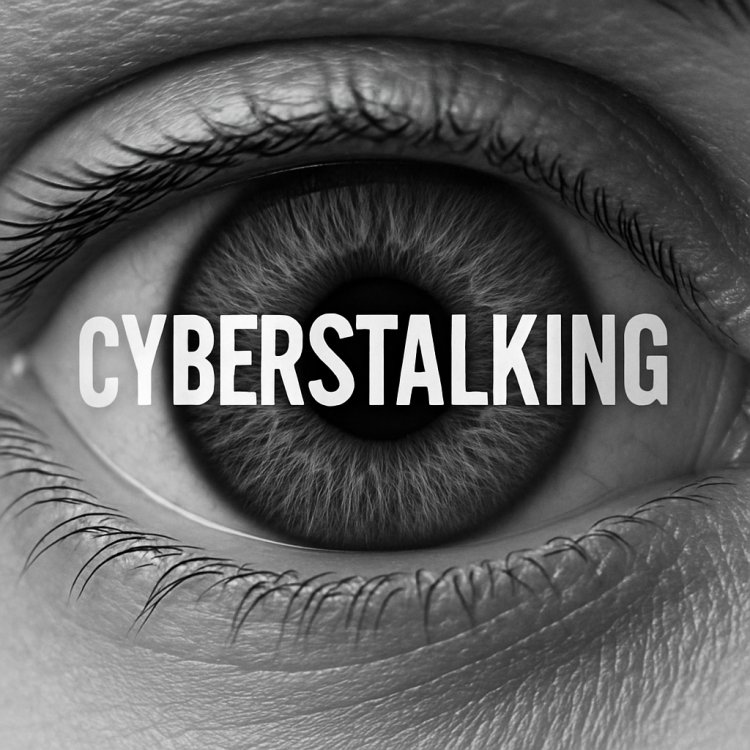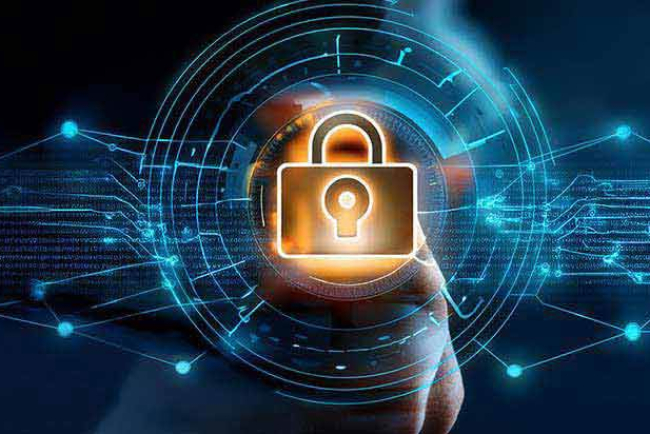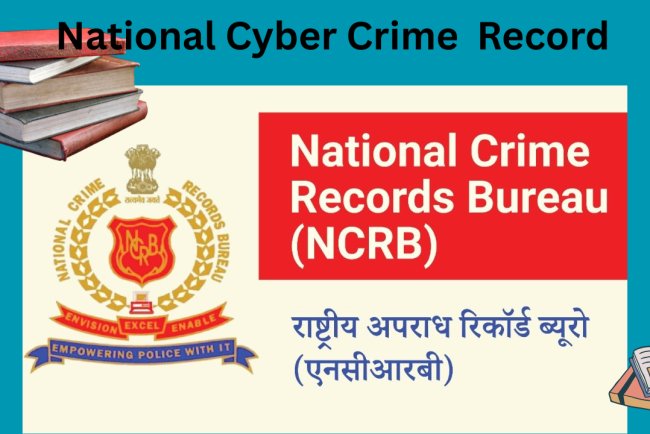Introduction: The Point at Which Digital Closeness Turns Into Monitoring
Our lives unfold online—through pictures, location tags, story updates, and typing indicators—in a time when digital ties frequently take the place of in-person relationships. Although technology encourages social connection, its hypervisibility also invites a sneaky danger: cyberstalking.
Unwanted surveillance, digital infiltration, and psychological manipulation are all components of cyberstalking, a persistent and technologically enabled pattern of harassment. Cyberstalking just needs access to data, gadgets, or social media platforms—no physical presence is necessary, unlike traditional stalking. Fake accounts, malware, and geolocation technologies are used to follow, study, and harass victims—often without the victims' knowledge.
One terrifying example is the case of musician Billie Eilish, who had to get a restraining order against someone who used internet data to find her home and kept showing up at her door. Nearer to home, an IT student was jailed in Bengaluru for employing GPS-based surveillance and phony emails to harass a peer.
These instances are warnings rather than exceptions. Cyberstalking isn't far away at a time when every "like" creates a digital footprint; rather, it's unsettlingly close.
The Development of Stalking Behavior in the Digital Age
Once restricted to direct intimidation and physical observation, stalking has easily transitioned to the digital era, expanding in scope, anonymity, and psychological complexity. As social media, cellphones, and constant connectivity have grown in popularity, stalking has evolved into cyberstalking, a pattern of coercive control made possible by technology.
Cyberstalking does not necessitate closeness, in contrast to its conventional equivalent. Cybercriminals use technologies such as browser fingerprinting, information mining, social engineering, and geolocation tracking to monitor and control their victims. From keeping an eye on Instagram stories to tracking someone down through check-ins, the stalker's eyes are always there but never apparent.
In order to evade identification and attribution, contemporary cyberstalkers sometimes conceal themselves behind sockpuppet accounts, fake IP addresses, or hacked credentials.The offender might pose as a devoted follower, a phony admirer, or even a reliable acquaintance with unapproved access.
In addition to being more subtle, this development has caused stalking to become more emotionally upsetting for its victims. Digital monitoring may continue around-the-clock, transforming applications and cellphones into instruments of control.
Our comprehension of how technology might be used to compromise individual safety, agency, and autonomy must also develop along with technology.
The Cyberstalker's Psychological Structure
Not only do cyberstalkers use technology as a tool, but they also use it to further their psychological goals, which are frequently based on control, entitlement, or obsession. Cyberstalkers, as opposed to opportunistic hackers, display consistent patterns of conduct, simulating closeness and control over their targets using digital platforms.
They use technological tricks to surreptitiously monitor and penetrate the victim's life by manipulating connection-oriented systems like social media, cloud storage, and location-based services. Many employ Open Source Intelligence (OSINT) strategies to get personally identifiable information from publicly accessible sources, including addresses, phone numbers, and habits. Some use remote access tools (RATs), keyloggers, or malware to compromise personal devices.
These people frequently exhibit a startling level of computer proficiency, hiding their identities via proxy servers, VPNs, and encrypted messaging. To obtain illegal access, they could impersonate reliable contacts, fake emails, or take advantage of app permissions.
Their reasons might be anything from perceived grievances to thrill-seeking to the rejection of love attraction. But one thing is consistent across all cases: the abuse of commonplace technology to monitor behavior, apply psychological pressure, and transgress someone else's digital and emotional boundaries.
Early Warning Signs of Cyberstalking: Red Flags
Overt threats are rarely the first step in cyberstalking. Rather, it frequently manifests as subtle, easily missed actions, each of which may appear harmless on its own but when combined create a pattern of intrusion and monitoring.
Excessive engagement—liking, commenting, or replying to your postings within seconds, across platforms, even after being blocked—is one of the first warning signs. In order to get around limitations and keep an eye on your online activities, cyberstalkers may make several fictitious identities, or "sockpuppets." It's a red flag if someone follows every digital action you take, even on obscure sites, or frequently reads your tales or shows up in your "active viewers."
Technologically, more sophisticated indicators include unusual login activity, password reset prompts, or device behavior anomalies—potential signs of account compromise or the presence of stalkerware. You might also notice someone referencing private information never made public, indicating the use of social engineering or unauthorized access.
Another common tactic is mirroring behavior—where the stalker replicates your interests, follows your friends, or mimics your content to stay digitally close.
Recognizing these early signs is critical. Cyberstalking escalates quietly. The sooner these patterns are identified, the sooner protective steps can be taken.
More advanced technological symptoms include irregularities in device behavior, password reset requests, or unexpected login activity—all of which might be evidence of account breach or stalkerware. Additionally, you may see someone bringing up private material that has never been made public, which might be a sign of unauthorized access or social engineering.
Another popular strategy is mirroring behavior, in which the stalker imitates your material, follows your acquaintances, or duplicates your hobbies in order to maintain a virtual connection.
It's crucial to identify these early indicators. Silently, cyberstalking intensifies. Protective measures can be implemented sooner if these trends are recognized early.
Modus Operandi: Cyberstalkers' Tools and Strategies
Cyberstalkers use a wide range of techniques to enter, monitor, and control their targets—often undetected—exploiting digital ecosystems with frightening accuracy. They take a systematic strategy that combines technology exploitation and social engineering.
One of the most popular strategies is the use of stalkerware, a type of surveillance software that is placed on computers or cellphones and secretly gathers information including browser history, GPS position, call records, and messages. Many of these tools pose as genuine applications and are easy to use with no technical expertise.
Cyberstalkers may also use phishing tactics, frequently through phony emails, spoof websites, or direct messaging, to fool victims into disclosing login credentials. Once inside, they take use of conversations, cloud drives, and even smart home appliances.
Doxxing is another popular tactic, which is frequently used as revenge and involves making a target's personal information—such as addresses, phone numbers, or intimate images—publicly available. Keyloggers and remote access tools (RATs) are employed in more complex situations to take over a victim's device in real time.
Cyberstalkers now have a broad and constantly changing toolbox that makes them both invisible and dangerously successful due to the combination of digital reliance and poor cybersecurity hygiene.
Prominent Cases and the Worrying Increase in Online Stalking
A rapidly expanding online hazard, cyberstalking affects people of all ages, occupations, and locations. The severity and changing nature of this crime are demonstrated by the following actual cases:
Stalker tracked down her home location using images and information from the internet.
Several restraining orders were filed; threatening letters were left.
Encountered persistent stalking via social media and GPS tracking.
When stalkers tried to break into her home, they were apprehended.
- Emma Watson (United Kingdom)
Her emails, internet schedule, and IP address were all viewed by cyberstalkers.
Pushed for more robust safeguards for online privacy.
- Techie Case in Hyderabad (2022)
In order to stalk and harass a woman, the accused made more than 70 fictitious accounts.
To avoid detection, fake IP addresses and anonymization technologies were used.
Stalker sent threats using encrypted apps after breaking into her CCTV system.
Utilized her work contact information improperly to keep tabs on her online.
- Case of Mumbai Schoolgirls (2019)
The teen was targeted by many phony Instagram profiles.
Her family was threatened when her personal images were taken and used as blackmail.
*These instances show that cyberstalking is becoming a widespread digital safety concern that calls for more awareness, legal action, and robust digital boundaries.
The Legal Environment: Regulations and Reporting Procedures
Although cyberstalking is illegal in India and many other nations, victims frequently fail to take prompt legal action because they are unaware of this. The following are important legislation, resources, and guidelines intended to assist people in responding appropriately:
- Legal Provisions in India
The Indian Penal Code, Section 354D
Discusses stalking in particular, including cyberstalking.
Includes keeping tabs on a woman's online activities, following her, or reaching out to her frequently in spite of obvious lack of interest.
Penalty: For a first offense, up to three years in jail.
- The IT Act of 2000, Section 66E
Addresses the issue of internet privacy violations.
Includes taking, sharing, or publishing pictures of someone else's intimate parts without that person's permission.
- A section of the IT Act 67
Focuses on the internet dissemination of pornographic or sexually explicit content.
Frequently used in situations involving explicit threats made through internet platforms, revenge porn, or blackmail.
Where to Report Cyberstalking and How to Do It
- Portal for Reporting Cybercrimes Nationwide
Website: www.gov.in/cybercrime
Provides areas specifically for ladies and children.
In some situations, it permits victims to submit reports anonymously.
- Local Police Departments' Cyber Cells
There is a cybercrime squad in every major Indian city.
Using digital proof (screenshots, chat logs, URLs), victims can file a formal complaint or FIR at the closest police station.
- Cyber Helpline (1930) and Women's Helpline (1091)
For assistance and referral to cybercrime teams, use the national emergency lines.
*There is legal protection, but it starts with knowledge, paperwork, and prompt action. Our willingness to apply the law must change along with it.
Preventive Steps: Defending Your Digital Limits
In this hyperconnected age, protecting your digital trail is now necessary, not optional. Cyberstalkers enter their target's personal space by taking advantage of social engineering, open-source data, and lax security settings. You may strengthen your digital security by using the following technically sound practices:
- Turn on MFA (multi-factor authentication).
Always have 2FA or MFA enabled on your cloud storage, social media, banking, and email accounts.
To avoid SIM swap attacks, use authenticator applications (such as Google Authenticator or Authy) instead of SMS-based authentication.
- Reduce Your Digital Imprint
Steer clear of providing too much personal information, such as phone numbers, frequent check-ins, or geotagged photos.
Use programs like AccountKiller or JustDelete.me to audit and remove unneeded accounts on a regular basis.
- Control Social Media Privacy Settings
Disable search engine profile indexing, limit story exposure, and apply custom audience filters.
Review app permissions on a regular basis, paying particular attention to location, microphone, and camera access.
- Keep an eye out for device compromise
Install reliable anti-stalkerware software, such as Norton Mobile Security or Certo AntiSpy.
Keep an eye out for indicators of intrusion, such as slow performance, data spikes, strange programs, or fast battery consumption.
- Take Care of Your Digital Health
Make use of strong, one-of-a-kind passwords created with a password manager such as 1Password or Bitwarden.
Use private DNS or encrypted surfing tools (such as Brave or Firefox with HTTPS Everywhere) and routinely clear the cache and cookies in your browser.
- Make use of encrypted communication and a VPN.
Your IP address is hidden and your internet traffic is encrypted via a virtual private network, or VPN. Opt for end-to-end encrypted messaging applications such as Signal rather than open platforms or regular SMS.
*Depending on how it is utilized, technology may either expose or protect. Learning the fundamentals of cybersecurity is now essential for all internet users, not just specialists.
How to React Lawfully and Safely if You're a Target

The most important things to do if you think you're being cyberstalked are to respond quickly, keep your cool, and save any digital proof. You can reply both legally and technically by using the following methodical approach:
- Keep a record of everything
Even seemingly insignificant messages, profiles, emails, and comments should be screenshotted.
Keep track of platform activity, timestamps, users, and URLs. Legal admissibility and digital forensics depend on this.
- Protect Your Devices and Accounts
Use a password manager to change passwords instantly.
All essential services should have multi-factor authentication enabled.
Use anti-malware software such as Norton or Malwarebytes to check for spyware or remote access tools (RATs).
- Don't Participate
Reacting or blocking stalkers too quickly might lead to an escalation.
Rather, use the in-app features to report the behavior to the platform and get confirmation of the complaint.
- Submit a Complaint to the Law
To lodge a complaint, go to cybercrime.gov.in or the cyber cell that is closest to you.
Provide a formal statement together with all the evidence that has been gathered.
To get help right now, call helplines like 1930 or 1091.
*You don't have no power. Digital harassment may be addressed and prevented with the correct resources and information.
Conclusion: Regaining Independence in an Interconnected Society
We live in a time where vulnerability and connection are ever-present. In many instances, what started out as a communication tool has evolved into an invasive weapon. Cyberstalking violates psychological boundaries, digital liberty, and fundamental human safety; it is more than just an abuse of technology.
Cyberstalking is a tech-enabled kind of coercive control that requires both social awareness and systemic reaction, ranging from unapproved surveillance to compulsive monitoring. Although cybersecurity tools and regulatory frameworks offer crucial protection, knowledge is still the first line of defense.
Regaining your digital liberty necessitates a change in how we interact with technology, not merely the use of secret settings or strong passwords. It's about being aware of what we share, being able to see manipulation, and having the courage to speak out when someone crosses boundaries.
In the end, combating cyberstalking involves a societal demand for safer, more moral online environments as well as a personal act of resistance. Because privacy shouldn't ultimately be considered a luxury. It ought to be a privilege.
"Not all likes are love. Every opinion is not innocuous.
Go beyond the pixels. Keep your spirit safe online."
Follow cyberdeepakyadav.com on























